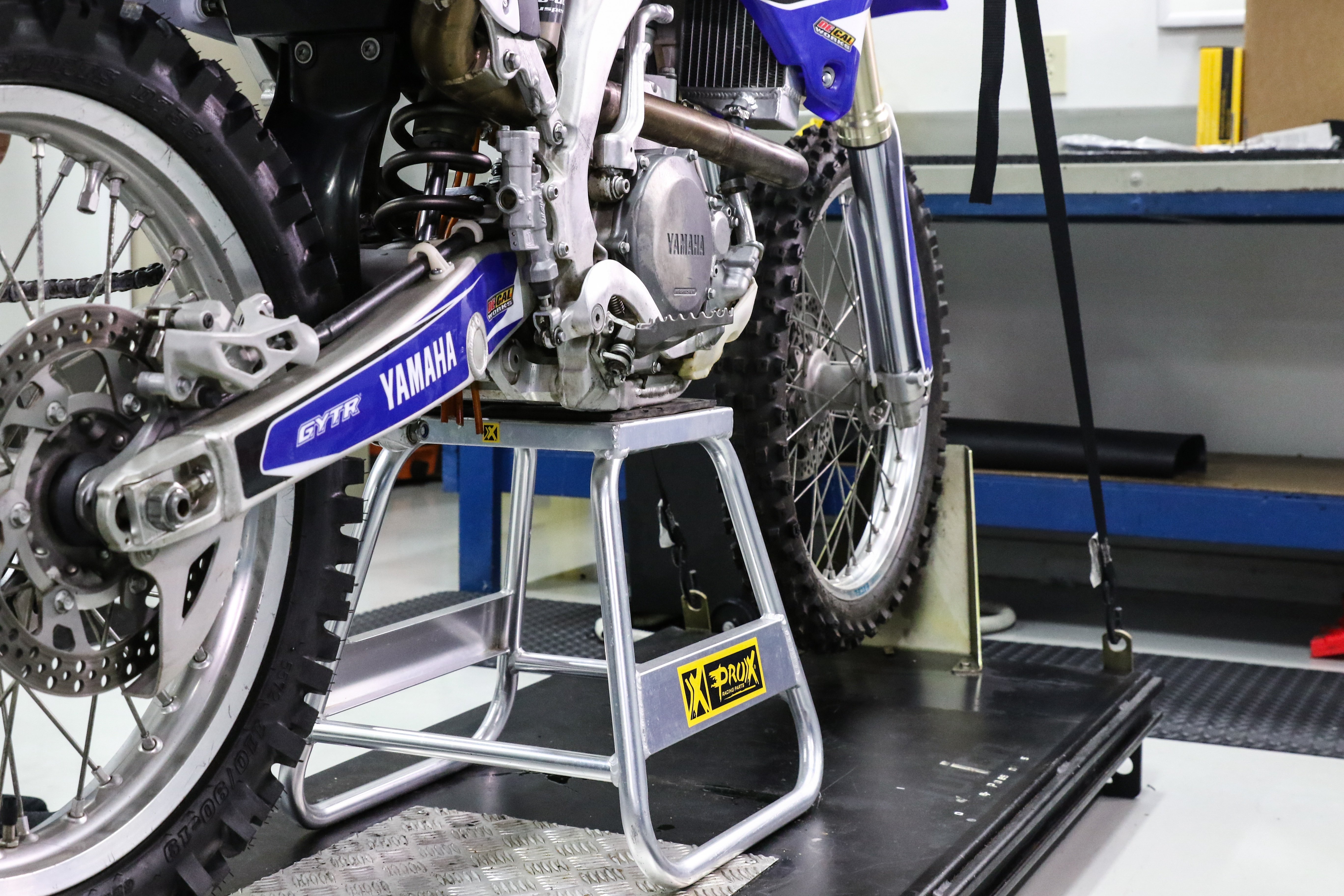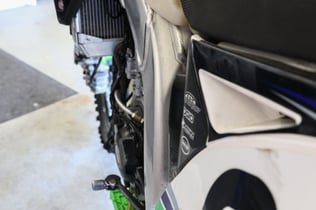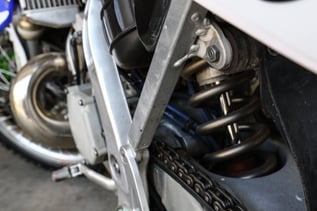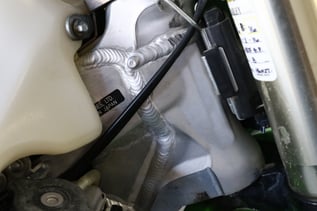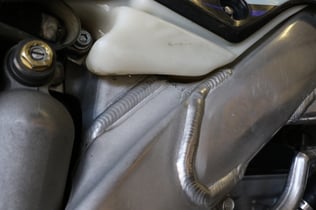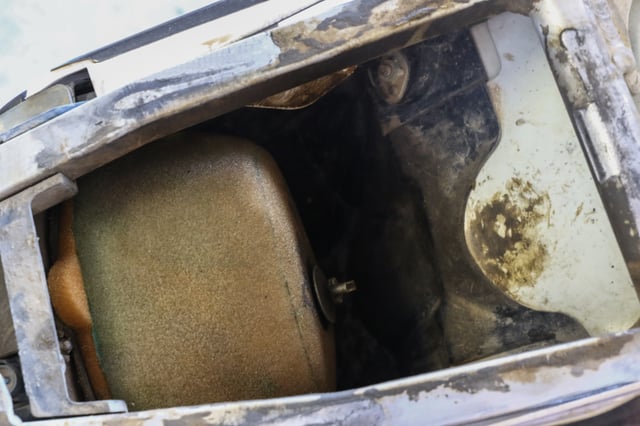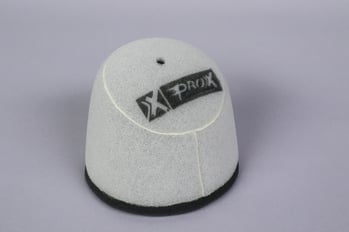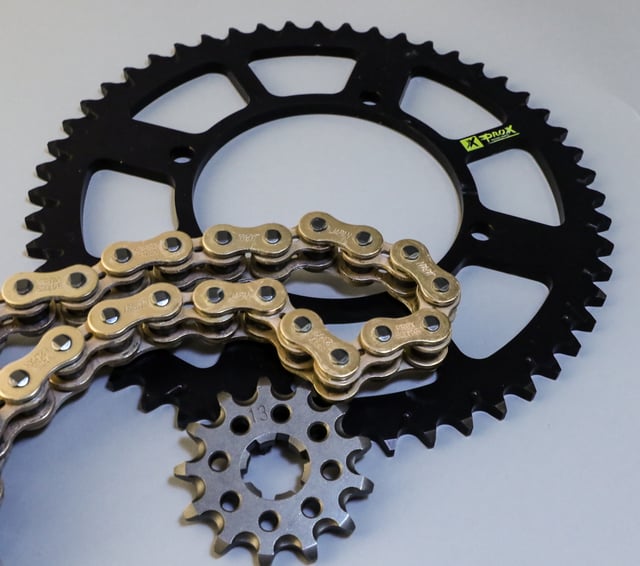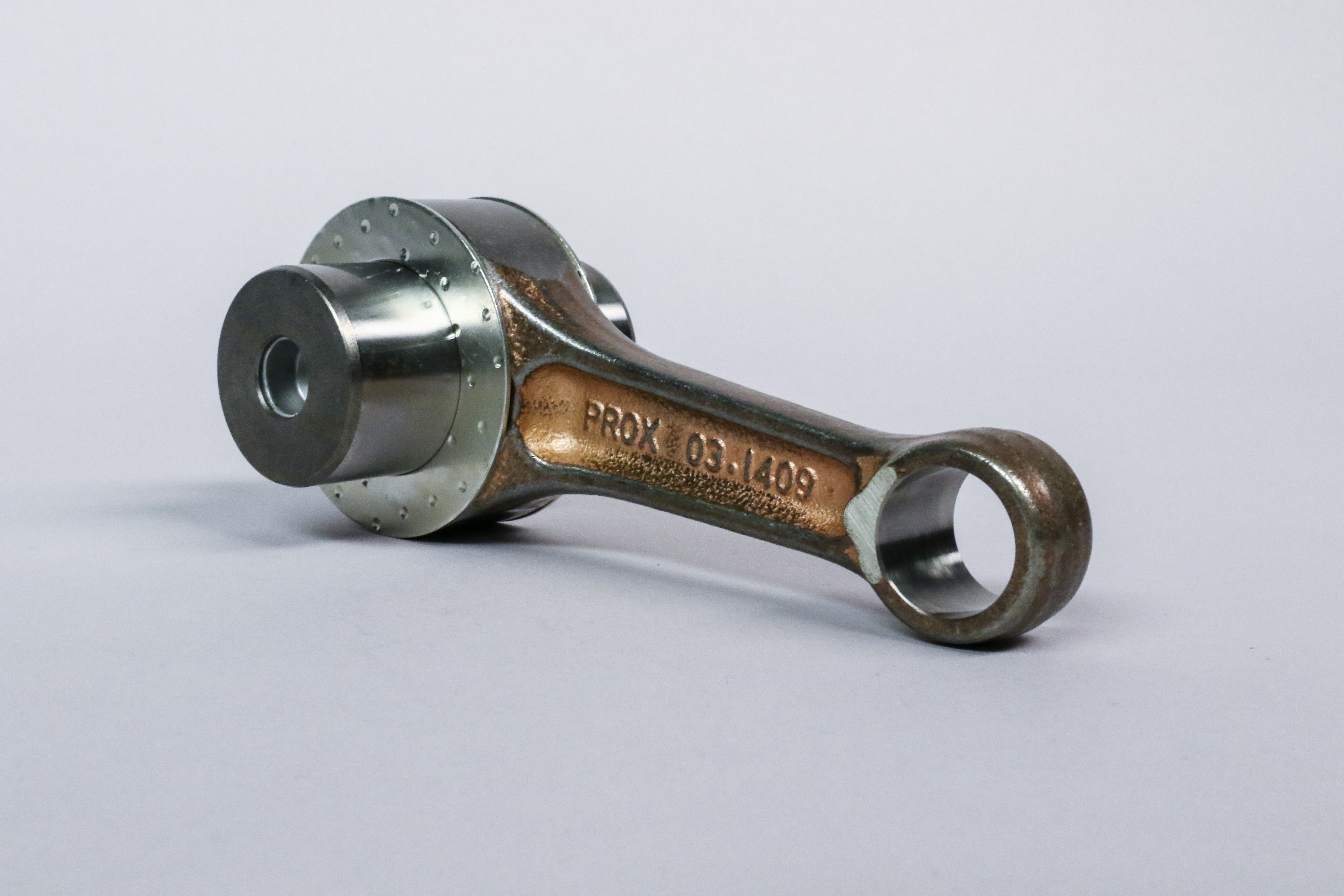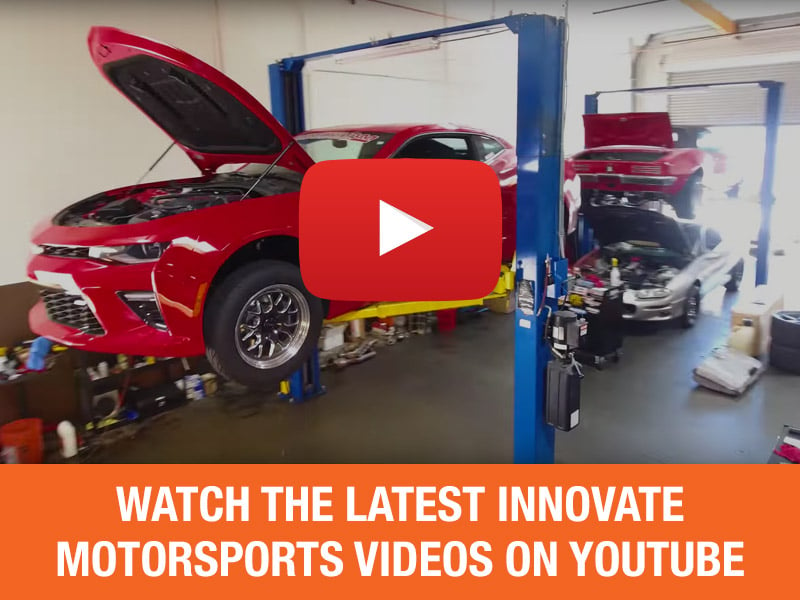Five things you should be checking when looking at a used bike, and how to look for problems!
The downside to buying a used bike is that you never truly know what you're getting. As much as we would like to believe in the goodness and honesty of others, we should make sure we form our own opinions based on what’s in front of us, not what people tell us. That’s why as a buyer, you should never be afraid to ask the hard questions. More importantly, you should ALWAYS do adequate research, observation, and analysis before you make a purchase. You can do this by knowing exactly what it is you’re looking for, how to look, and by having ample knowledge on the used bike before going to check it out. Here’s a few pointers on what is important to know and look for.
1) Take A Good Look
Although this may seem like the obvious thing to do, it can reveal more information than you may think. Not only should you be looking the bike over, you should also be looking at your surroundings. If you are going to the seller's home, you can get a general idea of how well they took care of the bike based the condition of their other belongings. Is the garage clean? Is his/her car clean? Although this is not a foolproof system, it is often true that if the seller takes care of these things, he or she probably took good care of the bike as well.
Once you’ve taken in your surroundings, the bike needs a thorough visual inspection. First, you should look the frame over. Looking at the frame, you can tell if the bike has been involved in any serious crashes or has any major damage. It is important to look for any bends or cracks. Most of the time, the most obvious bends can be noticed by looking at the frame from the rear. The frame welds are some of the most important areas to check for cracks. Inspect each weld thoroughly, and if you see any cracks, our recommendation is to thank them for their time and move on to the next option.
Another thing to look at is the wheels and tires. Take a close look at both wheels for any cracks or noticeable bends. Spin the wheel to check for smooth rotation, you don’t want it to wobble. If it wobbles, it’s probably bent. You’ll also want to make sure you check the hubs and the spokes. Cracked hubs are a sign of a bad crash or excessive wear.
We recommend doing the “squeeze” test on each spoke to make sure they’re not loose. If you squeeze each pair of spokes between your fingers and you feel lateral movement in either end, then the spokes have not been checked and tightened in a while. Loose spokes are a telltale sign of poor bike maintenance.
Don’t be afraid to make a checklist and go through these points as you inspect. You want to make the best decision, and sometimes things that seem little can cost you big in the end. Don’t overlook the small issues. What may seem small at first can mean there are a lot of other small issues that could pile up, or what you thought was a small issue could lead to costly repairs. Even used wheels in good shape can be expensive.
2) “Filter” Out The Bad
One rule when buying a used bike is to always check the filter. The seller should always comply and let you look inside the airbox. If they say no, that is a good time to say, “thanks, but no thanks.” A dirty air filter is another sign of poor maintenance. If the owner doesn’t even clean the air filter before a potential buyer comes to look at it, that’s probably not a bike you want to be riding.
Even if the air filter is clean, you’ll still want to buy a new one. There are certain items you should replace in a used bike regardless of their condition, and the air filter is one of them. ProX Racing Parts is a great option for almost any high-quality replacement part you might need. All ProX parts are manufactured at or above OEM quality, and they’re offered at affordable prices, so you don’t have to dump money into a used bike. After all, you bought a used bike instead of a new one to save money, right?
ProX air filters feature a dual stage design, much like many of the popular aftermarket air filters. They’re a great combination of performance sealing and breathability for a budget friendly price.
Next, you’ll want to check the engine/transmission oil. First, check the oil level on the bike, which should be an easy task. Some bikes have sight glasses, and others have dip sticks. Either way, there should be markings to indicate low and high oil levels. At the very least, it should be at the minimum level. If for some reason it is below the minimum, this is a good indication that there could be damage to the engine components. Also, if the oil you can see through the site glass is very dark or black in color, that’s a sign the oil hasn’t been changed in a while, which is poor maintenance practice. However, remember that the oil level(s) won’t read accurately on some bikes unless it has been warmed up, so check the oil level(s) after starting and running the bike.
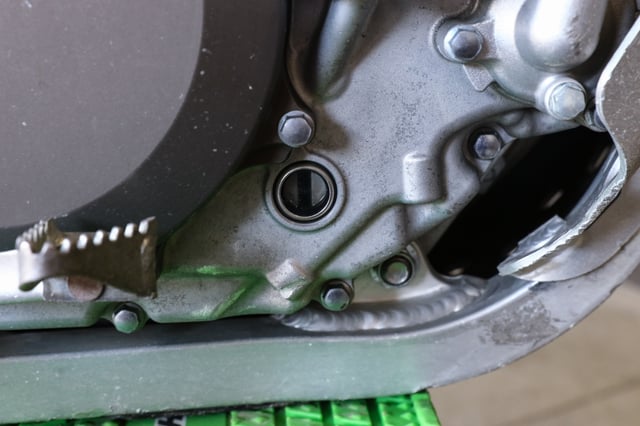
If the oil level is good and you do end up purchasing the bike, it’s still a good idea to change the oil and filter before taking it out so you know everything is fresh. ProX offers a complete line of OEM quality oil filters that are manufactured under strict standards for material quality and finished tolerances. Plus, they are affordable enough to stock up on.
Check out ProX filters and other parts for your application here.
A good piece of general advice is to do research on the specific model bike you will be looking at before you go. By doing some online research, you can find common problems to look for when making a purchase. Knowledge is power, and at the very least, the buyer will know you’re serious and won’t be able to take advantage of you.
3) Brakes, Chains & Sprockets
When you are looking at the bike you will want to check the brake pads. A more thorough inspection of brake pads involves removing them and checking for glazed surfaces, but you’re not going to be able to do that while looking at someone else’s bike. So, simply do a visual inspection of the amount of pad material left. If it looks like the material is getting close to or below 1mm in thickness, they need to replaced. Low brake pads aren’t necessarily a deal breaker for a used bike, just be sure to replace them if needed. Properly functioning brakes are critical to rider safety, and they’re inexpensive and easy to replace, especially with companies like ProX offering OEM replacement sintered material brake pads for prices less than the manufacturer's.
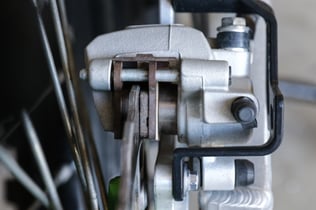
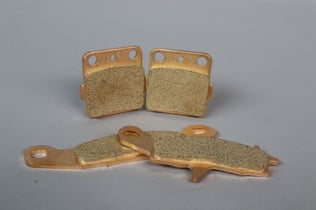
Find more ProX braking parts here.
Next, you will want to look at the chain and sprockets. Chains can last a long time if properly taken care of. Make sure that the chain looks like it has been maintained, which would require adequate cleaning. Check for kinks, as well as how far it is on the adjuster. If there is no room left for adjustment, it’s because the chain is stretched out and needs to be replaced. You can also indicate that it is a bad chain by checking the chain pins and links. If these have noticeably been worn down, there’s probably a lot of time on the chain.
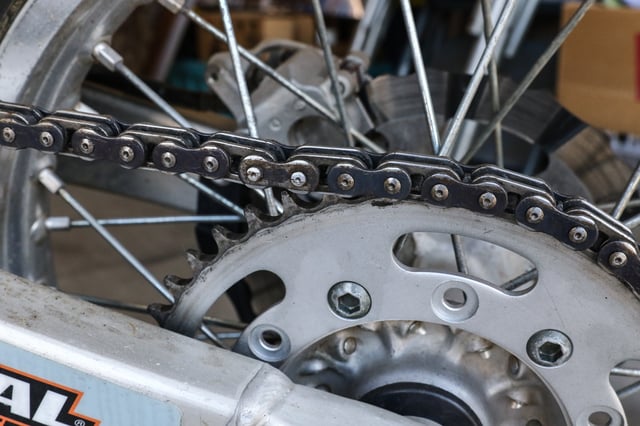
If the chain is properly maintained, you should be able to get one rear sprocket and two front sprockets out of one chain’s lifespan, assuming you’re running an aluminum rear sprocket. You should be looking for any chunks missing in the teeth, or if one side of each tooth has worn a deeper groove than the other.
Whether you need to replace your chain and sprockets right away or after some time, ProX offers a full line of chain and sprockets that surpass OEM quality. Chains are available in everything from standard to Gold X-Ring, which offers a nice happy medium between the long life of O-Ring chains and the performance of non-O-Ring chains.
ProX rear sprockets are available in both aluminum and steel. ProX aluminum rear sprockets are made from 7075 alloy heated to a T6 condition, and are CNC cut for precise performance and fit. The steel sprockets are machined from 420 and 460 high strength steel, and will last 2-3 times longer than the aluminum sprockets. ProX front sprockets combat corrosion and rust by being manufactured from SCM435 Ni-Chrome Molybdenum steel with a low carbon core, creating more resistance to breakage. All the sprockets are machined with cleaning grooves to keep mud and dirt from packing between your chain and sprockets.
Find ProX chains and sprockets for your bike here.
4) Pop the Cap Off
Checking the coolant is an easy task, you can simply take off the cap and check the coolant level to make sure that it is at or near the top. DO NOT TAKE THE CAP OFF WHEN THE ENGINE IS WARM, burns aren't fun. If the coolant is low, the engine may have overheated and spit some coolant out of the overflow tube. There’s also the possibility of a head gasket leak or other sealing issues if the coolant level is low, so be conscious of those possibilities. After you check the coolant, you can take a closer look at the radiator.
Some of the things you might be looking for is whether it is smashed or bent. How do the fins look? Just by looking, you will have a good indication of whether you will need a new one or not. Be aware that needing a new one can be expensive, so try to bargain that into your final price of purchase should you decide to buy the bike.
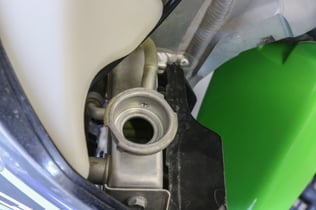
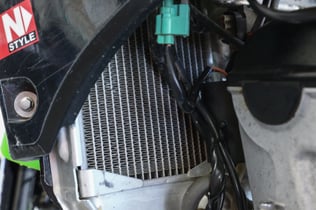
5) Don’t Forget to Listen
Not only are you there to look, but you are also there to LISTEN. When checking for engine noises you’ll want to start the engine and let it idle for at least a minute. During this time, you are listening for any rattling, knocking, or ticking sounds. These sounds can be caused by several problems, and are almost always part of a larger problem. You could be looking at things like a worn crankshaft, worn piston/cylinder bore, or valves that are out of spec. All these issues are normally caused by too much time being put on the engine without performing the proper rebuild maintenance.
If your plans are to buy a bargain bike and rebuild the engine, ProX offers most of the components you need. You may need products such as connecting rods, big and small end bearings, piston kits, valves, valve springs, gaskets, and clutch components. ProX products can help you rebuild your bike with OEM reliability while staying on an affordable budget.
See more ProX engine components here.
The best way to check the transmission of the bike is to do a test ride. You can shift through all the gears while analyzing the transition between each. It is important that it shifts easily up and down through all the gears without any feeling of sticking or difficulty getting into any gear. You will be able to feel and or hear any irregularities.
Lastly, listen to the exhaust. On top of listening you can take a quick glance at the exhaust for any major and or noticeable damage. While listening, you can usually tell when there is little to no muffler packing because it’s loud and raspy. Another option to check for adequate muffler packing is to simply knock on the canister, like you would a door. If it sounds hollow, there's likely little to no packing left.
All in all, buying a used bike can be overwhelming with a lot to think about and look for. The more you do it, the more you learn, and the more you know. The most important thing is to take a good LOOK and a good LISTEN. When in doubt, it’s a good idea to take a friend who has knowledge and experience with you.

